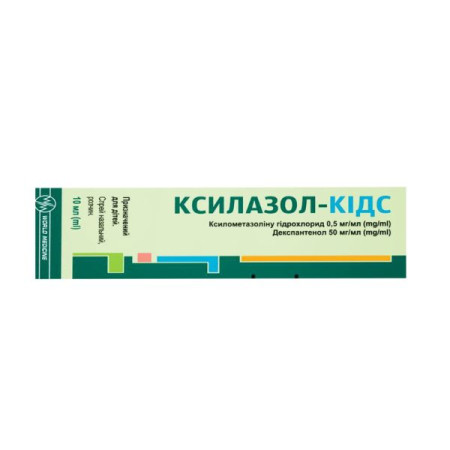Azapin tablets 25 mg blister No. 50

Pharmacological properties
Pharmacodynamics. Azapine is an antipsychotic drug that differs from classical antipsychotic drugs. Clozapine does not induce catalepsy and does not suppress stereotypic behavior caused by the administration of apomorphine or amphetamine. It has a weak blocking effect on dopamine d1-, d2-, d3- and d5-receptors, but is highly effective against d4-receptors, and also has anti-alpha-adrenergic, anticholinergic, antihistamine effects and inhibits the activation reaction. It also exhibits antiserotonergic properties. Clinically, Azapine exhibits a rapid and pronounced sedative effect and has a strong antipsychotic effect, in particular in patients with schizophrenia resistant to therapy with other drugs. In such cases, Azapine is effective against both productive and negative symptoms of schizophrenia. Severe extrapyramidal reactions such as acute dystonia, parkinsonian side effects and akathisia occur rarely. Unlike standard neuroleptics, Azapine does not increase or hardly increases prolactin levels, which avoids such undesirable effects as gynecomastia, amenorrhea, galactorrhea and impotence.
Pharmacokinetics. Absorption. Absorption of Azapine after oral administration is 90-95%; the rate and extent of absorption are independent of food intake. During the first pass through the liver, clozapine undergoes moderate metabolism. Absolute bioavailability is 50-60%.
Distribution. At steady state, after twice-daily dosing, Cmax in the blood is reached on average after 2.1 hours (0.4-4.2 hours), the volume of distribution is 1.6 l/kg body weight. Clozapine is approximately 95% bound to plasma proteins.
Biotransformation/metabolism. Clozapine is almost completely metabolized before excretion. Only one of its major metabolites, desmethylclozapine, is pharmacologically active. Its action resembles that of clozapine, but is much weaker and of shorter duration.
Elimination. Clozapine is eliminated in two phases with a mean half-life of 12 h (range 6-26 h). After a single dose of 75 mg clozapine, the mean half-life is 7.9 h. This increases to 14.2 h at steady state following 75 mg/day dosing for at least 7 days. Only minor amounts of unchanged drug are recovered in urine and feces. Approximately 50% of the administered dose is excreted as metabolites in the urine and 30% in the feces.
Linearity/non-linearity. It was noted that during the period of equilibrium, when the daily dose was increased from 37.5 to 75 and 150 mg (given in 2 doses), a linear dose-dependent increase in AUC was noted, as well as an increase in C max and minimum plasma concentrations.
Pharmacokinetics of certain patient groups. The drug should be used with caution in patients with impaired liver function, biliary tract and kidney diseases. In severe cases of the disease, the use of the drug is contraindicated.
Indication
Treatment-resistant schizophrenia: Azapine should only be prescribed to patients with schizophrenia who are treatment-resistant or tolerant to standard neuroleptics as defined below.
Resistance to standard neuroleptics is a condition where previous treatment with standard neuroleptics at an appropriate dosage and for a sufficient period of time has not resulted in adequate clinical improvement.
Intolerance to standard neuroleptics is a condition in which severe unmanageable side effects of a neurological nature (extrapyramidal symptoms or tardive dyskinesia) occur, which make effective neuroleptic therapy with standard neuroleptics impossible.
Risk of recurrence of suicidal attempts: Azapine is indicated for the long-term reduction of the risk of recurrence of suicidal behavior in patients with schizophrenia or schizoaffective disorder who are assessed for such risk based on their medical history and current clinical presentation.
Psychotic disorders during therapy for Parkinson's disease. Azapine is indicated for the treatment of psychotic disorders that develop during the course of Parkinson's disease, if standard therapy has been ineffective.
Failure of standard therapy is defined as lack of control of psychotic symptoms and/or the appearance of a functionally unacceptable increase in motor symptom severity after taking the following measures:
withdrawal of anticholinergic drugs, including tricyclic antidepressants; attempt to reduce the dose of dopaminergic antiparkinsonian drugs.Application
The doses of the drug are selected individually. Each patient should use the minimum effective dose. It is necessary to start therapy with the drug Azapin only when the patient's total leukocyte count is ≥3500 / mm3 (3.5 109 / l), and the absolute neutrophil count (ANC) is ≥2000 / mm3 (2.0 109 / l) and the indicators are within the standardized normal range of values.
Dose adjustment is indicated for patients who are also receiving drugs that interact with Azapine, such as benzodiazepines or selective serotonin reuptake inhibitors.
The following dosages are recommended.
Initial dose. On the 1st day, prescribe 12.5 mg (½ tablet of 25 mg) 1 or 2 times, and 1 or 2 tablets of 25 mg on the 2nd day. If well tolerated, the dose can be increased gradually by 25-50 mg/day to a dose of 300 mg/day within 2-3 weeks. After that, if necessary, the daily dose can be increased to 50-100 mg at intervals of 2 times a week or, preferably, every week.
Therapeutic range. In most patients, the onset of antipsychotic effect can be expected at a dose of 300-450 mg/day, which should be administered in divided doses. Some patients may be adequate at lower daily doses, while others may require doses up to 600 mg/day.
The total daily dose can be divided into unequal doses, the largest of which should be taken at bedtime.
Maximum dose. Some patients may require higher doses to achieve full therapeutic effect; in such cases, it is advisable to gradually increase the dose (i.e., the dose increment should not exceed 100 mg) until 900 mg/day is reached. An increase in the number of adverse reactions (including paroxysms) is possible at doses exceeding 450 mg/day.
Maintenance dose. After achieving the maximum therapeutic effect, the condition of many patients can be effectively maintained with lower doses of the drug. For this, it is recommended to gradually reduce the dose of the drug. Treatment should be carried out for at least 6 months. If the daily dose of the drug does not exceed 200 mg, a single evening administration of the drug may be appropriate.
Cancellation of therapy. In case of planned discontinuation of therapy with the drug Azapin, a gradual dose reduction over 1-2 weeks is recommended. If abrupt withdrawal of the drug is necessary (for example, due to leukopenia), the patient should be carefully observed for possible exacerbation of psychotic symptoms or symptoms associated with cholinergic rebound effect (for example, increased sweating, headache, nausea, vomiting and diarrhea).
Resuming therapy. If more than 2 days have passed since the last dose of Azapin, treatment should be resumed, starting with a dose of 12.5 mg (½ tablet of 25 mg) 1 or 2 times on the 1st day. If this dose of the drug is well tolerated, the dose can be increased to achieve a therapeutic effect more quickly than recommended for initial treatment. However, if the patient had respiratory or cardiac arrest during the initial period of treatment, but then the dose of the drug was successfully brought to the therapeutic level, the dose should be increased again very carefully.
Switching from previous neuroleptic treatment to Azapin therapy. As a rule, Azapin should not be prescribed in combination with other neuroleptics. If therapy with Azapin is to be initiated in a patient already receiving oral neuroleptic treatment, it is recommended, if possible, to first discontinue the other neuroleptic, gradually reducing the dose over 1 week. Therapy with Azapin can be initiated as described above, not earlier than 24 hours after complete discontinuation of the other neuroleptic.
Risk of relapse of suicide attempts. Recommendations for dosage and method of administration are the same as for the treatment of treatment-resistant schizophrenia.
Psychotic disorders during the treatment of Parkinson's disease. The initial dose should not exceed 12.5 mg/day (½ tablet of 25 mg), taken as a single dose in the evening. Subsequent dose increases should be in increments of 12.5 mg, with a maximum increase of 2 times per week to 50 mg - a dose that should not be reached before the end of 2 weeks. The total daily dose should preferably be taken as a single dose in the evening.
The average effective dose is usually 25-37.5 mg/day. If treatment for at least 1 week at a dose of 50 mg/day does not provide a satisfactory therapeutic response, the dose can be cautiously increased by 12.5 mg/week.
The dose of 50 mg/day should only be exceeded in exceptional situations, and the maximum dose should never exceed 100 mg/day.
Dose escalation should be limited or discontinued if orthostatic hypotension, excessive sedation, or confusion occur. Blood pressure should be monitored during the first weeks of treatment.
If complete remission of psychotic symptoms persists for at least 2 weeks, the neuroleptic dose may be increased, if the increase is based on motor status. If this approach results in a recurrence of psychotic symptoms, the dose of Azapine may be increased in increments of 12.5 mg/week to a maximum dose of 100 mg/day, given as a single dose or in 2 divided doses.
End of therapy. It is recommended to gradually reduce the dose by 12.5 mg over at least 1 week (preferably 2 weeks). Treatment should be discontinued immediately if neutropenia or agranulocytosis occurs. In this situation, careful psychiatric monitoring of the patient is necessary, as symptoms may recur rapidly.
Use in elderly patients. It is recommended to start treatment with a particularly low dose of the drug (on the 1st day - 12.5 mg once) with a subsequent increase in dose by no more than 25 mg/day.
Use in patients with renal insufficiency. For patients with mild and moderate renal insufficiency, the initial dose of the drug should be on the 1st day - 12.5 mg 1 time per day, followed by a slow and small increase in dose.
Use in patients with hepatic impairment. Patients with hepatic impairment should take the drug with caution and regularly monitor liver function.
Contraindication
Hypersensitivity to clozapine or any other component of the drug; inability to regularly monitor the patient's blood counts; toxic or idiosyncratic granulocytopenia/agranulocytosis in history (except for the development of granulocytopenia or agranulocytosis due to previously undergone chemotherapy); agranulocytosis in history induced by Azapine; impaired bone marrow function; uncontrolled epilepsy; alcoholic or other toxic psychoses, drug intoxications, comatose state; vascular collapse and/or central nervous system depression of any etiology; severe renal or cardiac disorders (e.g. myocarditis); acute liver disease accompanied by nausea, loss of appetite or jaundice; progressive liver disease, hepatic failure; paralytic ileus; Azapine should not be prescribed in combination with drugs that can cause agranulocytosis; depot neuroleptics should also not be used simultaneously.Side effects
The adverse event profile of clozapine is largely predictable from its pharmacological properties. An important exception is the drug's potential to cause agranulocytosis. Therefore, the risk of prescribing the drug is limited to the treatment of patients with schizophrenia refractory to other drugs and to psychosis occurring during treatment for Parkinson's disease when standard treatment has failed. Although blood monitoring is an important part of the management of patients taking clozapine, the physician should be aware of other rare but serious adverse events that may be detected early only by careful observation and questioning of the patient to prevent morbidity and mortality.
From the blood and lymphatic system: decrease in the total number of leukocytes, neutropenia, eosinophilia, leukocytosis; agranulocytosis, anemia, lymphopenia; thrombocytopenia, thrombocytosis.
Granulocytopenia and/or agranulocytosis are possible complications of Azapin therapy. Although agranulocytosis in most cases resolves after discontinuation of treatment, it can lead to sepsis and be fatal. To prevent the development of agranulocytosis, which is life-threatening, Azapin should be discontinued promptly. This requires regular monitoring of the number of leukocytes in the blood.
Metabolic: weight gain; impaired glucose tolerance, diabetes mellitus (even in patients with no history of hyperglycemia or diabetes mellitus); severe hyperglycemia, ketoacidosis, hyperosmolar coma (even in patients with no history of hyperglycemia or diabetes mellitus); hypercholesterolemia, hypertriglyceridemia.
During treatment with clozapine, impaired glucose tolerance and/or the development or exacerbation of diabetes mellitus have been reported rarely. Very rarely, in patients with a history of hyperglycemia and receiving therapy with the drug Azapine, cases of severe hyperglycemia have been reported, sometimes leading to the development of ketoacidosis/hyperosmolar coma. Glucose levels normalized in most patients after discontinuation of treatment with Azapine; hyperglycemia sometimes recurred when the drug was re-administered. Although most patients had risk factors for the development of non-insulin-dependent diabetes mellitus, cases of hyperglycemia have also been reported in patients with no known risk factors.
From the psyche: dysarthria; dysphemia; anxiety, agitation.
Nervous system: drowsiness and sedation, dizziness, blurred vision, headache, tremor, muscle rigidity, akathisia, extrapyramidal symptoms, epileptic seizures, convulsions, myoclonic twitches; confusion, delirium; tardive dyskinesia, obsessive-compulsive symptoms.
Very rarely, tardive dyskinesia has been reported in patients treated with Azapine in combination with other neuroleptics. When taking Azapine, the severity of symptoms of tardive dyskinesia that developed against the background of the use of other neuroleptics decreased.
On the part of the organ of vision: blurred vision.
Cardiac: tachycardia; ECG changes; cardiomyopathy, cardiac arrest.
Tachycardia and orthostatic hypotension with/without syncope may occur, especially in the first weeks of treatment. The incidence and severity of hypotension depend on the rate and magnitude of dose titration. Cases of circulatory collapse as a result of severe hypotension have been reported, particularly with rapid dose titration, with possible serious consequences of cardiac or respiratory arrest.
A small number of patients treated with clozapine have experienced ECG changes similar to those seen with other antipsychotic drugs, including ST-segment depression and T-wave flattening or inversion, which have returned to normal after discontinuation of the drug. The clinical significance of these changes remains unclear. However, such abnormalities have been reported in patients with myocarditis, which should be considered.
Isolated reports of arrhythmia, pericarditis/pericardial effusion and myocarditis, sometimes fatal, have been received.
In most cases, myocarditis was noted within the first 2 months of starting clozapine treatment.
Cardiomyopathy generally developed later in the course of treatment.
Eosinophilia has been reported in association with some cases of myocarditis (approximately 14%) and pericarditis/pericardial effusion; however, it is currently unknown whether eosinophilia is a reliable predictor of the development of carditis.
Signs and symptoms of myocarditis or cardiomyopathy include persistent tachycardia at rest, palpitations, arrhythmia, chest pain, and other signs and symptoms of heart failure (e.g., unexplained fatigue, shortness of breath, tachypnea) or symptoms that mimic myocardial infarction. Other symptoms that may be present in addition to the above symptoms include flu-like symptoms.
Sudden, unexplained deaths are known to occur in psychiatric patients receiving conventional antipsychotics, as well as in untreated psychiatric patients. Such deaths have been reported very rarely in patients treated with clozapine.
In very rare cases, ventricular tachycardia and QT prolongation have been reported, which may be associated with torsades de pointes, although a conclusive causal relationship with the use of this medicinal product has not been established.
From the vascular system: arterial hypertension, orthostatic hypotension, syncope, thromboembolism, venous thromboembolism.
Respiratory system: aspiration of food (inhalation), pneumonia and lower respiratory tract infections, which can be fatal; respiratory depression or arrest with/without circulatory collapse.
On the part of the digestive system: constipation, hypersalivation; nausea, vomiting, anorexia, dry mouth; dysphagia; salivary gland enlargement, intestinal obstruction, paralytic intestinal obstruction, stool retention.
Food aspiration may occur in patients with dysphagia or as a result of acute drug overdose.
Liver, biliary tract and pancreas: increased liver enzymes, hepatitis, cholestatic jaundice, pancreatitis, fulminant hepatic necrosis.
If jaundice develops, the use of Azapin should be discontinued. In rare cases, the development of acute pancreatitis has been reported.
Skin and subcutaneous tissue disorders: skin reactions.
Renal and urinary disorders: urinary incontinence, urinary retention, interstitial nephritis.
From the reproductive system: priapism.
General disorders: increased fatigue, increased body temperature, benign hyperthermia, dysregulation of sweating and body temperature, neuroleptic malignant syndrome, sudden death under unexplained circumstances, hypersensitivity reactions.
Cases of neuroleptic malignant syndrome (NMS) have been reported in patients receiving clozapine alone or in combination with lithium or other active substances that affect CNS function.
Cases of acute drug withdrawal reactions have been reported.
Laboratory indicators: increased CPK levels.
Diseases during pregnancy, postpartum and perinatal periods: drug withdrawal syndrome in newborns.
The following adverse reactions have also been reported:
On the part of the immune system: Quincke's edema, leukocytoclastic vasculitis.
From the nervous system: cholinergic syndrome (after sudden withdrawal of the drug); EEG changes, pleurotonus.
Cardiac: myocardial infarction, which can be fatal; angina pectoris.
Respiratory system: nasal congestion.
From the digestive system: diarrhea; abdominal discomfort/heartburn/dyspepsia.
From the liver, biliary tract: hepatic steatosis; hepatic necrosis; hepatotoxicity; hepatofibrosis; cirrhosis; liver dysfunction, including hepatocellular, cholestatic or mixed liver damage, liver failure, which can be fatal and require liver transplantation.
Skin and subcutaneous tissue disorders: pigmentation disorders.
Renal and urinary disorders: nocturnal enuresis; renal failure.
Reproductive system and breast disorders: retrograde ejaculation.
Special instructions
The use of Azapin may lead to the development of agranulocytosis. The incidence of agranulocytosis and the mortality rate in patients who develop agranulocytosis have decreased significantly since the introduction of monitoring of leukocyte counts and absolute neutrophil counts (ANC). Therefore, the following measures are mandatory and should be carried out in accordance with official recommendations.
Due to the risks associated with the use of the drug Azapin, its prescription is possible if:
In patients with normal baseline white blood cell counts (total white blood cell count ≥3500/mm3 (3.5 x 109/L) and ANC ≥2000/mm3 (2.0 x 109/L)), total white blood cell counts and ANC can be performed weekly for the first 18 weeks of treatment and at least every 4 weeks thereafter. Monitoring should continue throughout treatment and for 4 weeks after complete discontinuation of Azapine.Before starting treatment with clozapine, the patient should have a blood test and a medical history, as well as a physical examination. Patients with a history of heart disease or findings suggestive of cardiovascular abnormalities during medical examination should be referred to a specialist for further investigation, which should include an ECG; the patient should only receive treatment if the expected benefit of treatment clearly outweighs the risk. The physician should consider the need for an ECG before starting treatment.
Physicians who prescribe this drug must fully comply with the necessary safety precautions.
Before initiating treatment, physicians should be sure, to the best of their knowledge, that the patient has not previously experienced adverse hematological reactions to clozapine that required discontinuation of the drug. Prescriptions for the drug should not be issued for a period longer than the interval between two blood tests.
At any time during treatment with Azapin, immediate discontinuation of the drug is mandatory if the leukocyte count is 3000/mm3 (3.0 x 109/l) or the ANC is -1500/mm3 (1.5 x 109/l). Patients in whom Azapin has been discontinued due to a decrease in leukocyte count or ANC should not be re-administered.
During each consultation, the patient using Azapin should be reminded to contact the doctor immediately if he begins to develop any infectious disease. Particular attention should be paid to complaints related to a flu-like condition, such as fever or sore throat, as well as other signs of infection that may indicate the development of neutropenia. Patients and their caregivers should be informed that if any of these symptoms occur, patients should immediately undergo a blood test with a cell count. Physicians who prescribe this drug are advised to keep a record of all blood test results of the patient and take all necessary measures to prevent accidental re-prescription of the drug to these patients in the future.
Patients with a history of primary bone marrow disorders should be prescribed the drug only when the expected effect of treatment outweighs the risk. Such patients should be examined by a hematologist before starting treatment with Azapin.
Patients with reduced white blood cell counts due to benign ethnic neutropenia should be given special attention, and treatment with Azapin should only be started after obtaining the consent of a hematologist.
Decreased WBC and ANC. If during treatment with Azapine the WBC count decreases to 3.5 x 10 9 / l (3500 / mm 3) and 3.0 x 10 9 / l (3000 / mm 3) or the ANC decreases to 2.0 x 10 9 / l (2000 / mm 3) and 1.5 x 10 9 / l (1500 / mm 3), hematological tests should be performed at least 2 times a week until the patient's WBC and ANC stabilize in the range of 3000-3500 / mm 3 (3.0-3.5 x 10 9 / l) and 1500-2000 / mm 3 (1.5-2.0 x 10 9 / l) or higher, respectively.
During treatment with Azapin, immediate discontinuation of treatment is mandatory if the leukocyte count is 3000/mm3 (3.0 x 109/l) or the ANC is -1500/mm3 (1.5 x 109/l). Thereafter, the leukocyte count and differential should be counted daily, and patients should be closely monitored for the development of flu-like symptoms or other symptoms suggestive of infection. It is recommended to confirm hematological values by performing two blood tests on 2 consecutive days, but Azapin should be discontinued after the first blood test.
After discontinuation of the drug Azapin, hematological parameters should be analyzed until they are restored.
Table 1| ≥3500 (≥3.5 x 10 9) | ≥2000 (≥2.0 x 10 9) | Continue treatment with Azapin |
| 3000-3500 (3.0 x 10 9 -3.5 x 10 9) | 1500-2000 (1.5 x 10 9 -2.0 x 10 9) | Continue treatment with Azapin; perform blood tests twice a week until hematological parameters stabilize or improve |
| 3000 (3.0 x 10 9) | 1500 (1.5 x 10 9) | Immediately discontinue treatment with Azapin; perform blood tests daily until hematological parameters normalize. This drug should not be prescribed to the patient again. |
If after discontinuation of Azapin, a decrease in the number of leukocytes to a level of 2000 / mm 3 (2.0 x 10 9 / l) or ANC 1000 / mm 3 (1.0 x 10 9 / l) is observed, treatment should be carried out under the guidance of an experienced hematologist.
Discontinuation of therapy for reasons related to hematological parameters. Patients in whom Azapin has been discontinued as a result of a decrease in white blood cell count or AKI (see above) should not be re-administered.
Physicians prescribing Azapin are advised to keep records of all patient blood test results and take all necessary measures to prevent accidental re-prescription of the drug in the future.
Interruption of therapy for reasons not related to hematological parameters. In patients in whom Azapine therapy lasting 18 weeks was interrupted for 3 days, but less than 4 weeks, weekly monitoring of the leukocyte count is indicated for an additional 6 weeks. Provided that there are no deviations from the norm, subsequent monitoring can be carried out no more often than 1 time in 4 weeks. If Azapine therapy was interrupted for ≥4 weeks, weekly monitoring is required during the next 18 weeks of treatment, and the dose of the drug should be re-titrated.
Other precautions: Azapine contains lactose. Patients with rare hereditary conditions of galactose intolerance, the Lapp lactase deficiency or glucose-galactose malabsorption should not take this medicine.
In the event of eosinophilia, it is recommended to discontinue Azapin if the eosinophil count increases to 3000/mm3 (3.0 x 109/l); treatment can be restarted only after the eosinophil count decreases to 1000/mm3 (1.0 x 109/l).
In the event of thrombocytopenia, discontinuation of Azapin is recommended if the platelet count is 50,000/mm3 (50 x 109/l).
The use of Azapine is known to be associated with an increased risk of myocarditis, especially in the first 2 months of treatment, but is not limited to this period. Myocarditis has sometimes been fatal. Pericarditis/pericardial effusion and cardiomyopathy have also been reported in association with the use of Azapine; these reports also include fatal cases. The development of myocarditis or cardiomyopathy should be suspected in patients who experience persistent tachycardia at rest, especially in the first 2 months of treatment, and/or palpitations, arrhythmia, chest pain and other signs and symptoms of heart failure (e.g. unexplained fatigue, dyspnea, tachypnea) or symptoms mimicking myocardial infarction. Other symptoms that may occur in addition to those listed above include flu-like symptoms. If myocarditis or cardiomyopathy is suspected, treatment with Azapin should be discontinued immediately and the patient should be immediately referred to a cardiologist.
Patients who develop
There are no reviews for this product.
There are no reviews for this product, be the first to leave your review.
No questions about this product, be the first and ask your question.


















